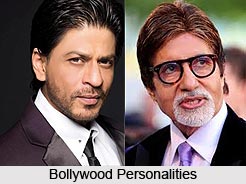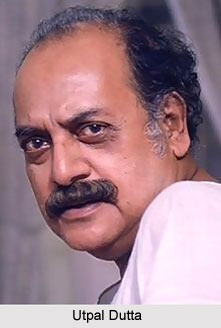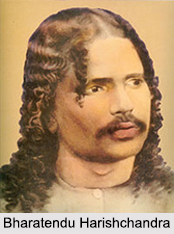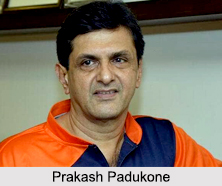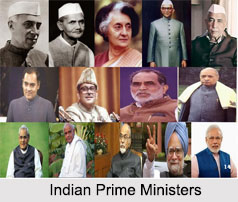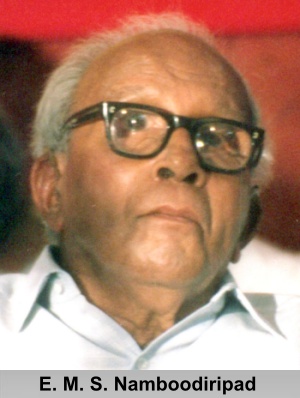 Kerala, the southwestern state of India, boasts a rich history shaped by diverse cultures and political transitions. Since its formation, the state has witnessed a succession of Chief Ministers, each playing a crucial role in its development and governance.
Kerala, the southwestern state of India, boasts a rich history shaped by diverse cultures and political transitions. Since its formation, the state has witnessed a succession of Chief Ministers, each playing a crucial role in its development and governance.
Political History of Kerala
Following India`s emancipation from the British Raj in 1947, significant political transformations unfolded in the princely states of Travancore and Cochin. In an effort to embrace representative governance, these states appointed prime ministers and established councils of ministers. A crucial milestone occurred on 1 July 1949 when Travancore and Cochin merged to form the Travancore-Cochin state. However, an intricate political arrangement persisted for regions like the Malabar District and Kasaragod in South Canara, as they maintained representation in the Madras Legislative Assembly, constituting more than half of present-day Kerala.
Formation of Kerala
The transformative shift towards the modern state of Kerala materialized on 1 November 1956 through the States Reorganisation Act, which delineated state boundaries based on linguistic considerations. The resulting Kerala state was an amalgamation of Malayalam-speaking regions, incorporating Cochin, Malabar, and Travancore, along with the Kasaragod region of South Canara. The inaugural assembly election for the new state transpired in February–March 1957, leading to the formation of the first Kerala Legislative Assembly on 5 April 1957, comprising 127 members, including one nominated representative.
Since its inception, Kerala has witnessed several visionaries assuming the role of Chief Minister. E. M. S. Namboodiripad, representing the Communist Party of India, was the inaugural Chief Minister, albeit facing an abbreviated tenure due to the imposition of President`s rule. Kerala has experienced President`s rule for a total of four years over seven terms, with the last occurrence in 1982. Subsequently, the chief ministerial position has alternated between leaders of the Indian National Congress and the Communist Party of India (Marxist). Notably, E. K. Nayanar holds the record for the lengthiest tenure, serving for a cumulative period of 10 years and 353 days. As of the present, Pinarayi Vijayan leads the state as the incumbent Chief Minister, heading the Left Democratic Front government since 25 May 2016.
Precursors: Prime Ministers of Travancore
Before the formation of Kerala as a separate state, the regions of Travancore and Cochin had their own Prime Ministers. In Travancore, Pattom Thanu Pillai of the Indian National Congress assumed office on 24 March 1948, succeeded briefly by Paravoor T. K. Narayana Pillai until 1 July 1949.
Precursors: Prime ministers of Cochin
During the transitional period from 1947 to 1949, Cochin witnessed a succession of Prime Ministers who played integral roles in the early governance of the region. Panampilly Govinda Menon assumed office on 14 August 1947, leading the administration until 22 October 1947. Following him, T. K. Nair took the reins, serving from 27 October 1947 to 20 September 1948. Subsequently, E. Ikkanda Warrier helmed the responsibilities of Prime Minister from 20 September 1948 to 30 June 1949.
Notably, all these leaders, Panampilly Govinda Menon, T. K. Nair, and E. Ikkanda Warrier, operated as independent candidates during their respective tenures. Unlike representatives of political parties, they navigated the intricacies of governance without formal party affiliations.
Chief Ministers of Travancore-Cochin
Following India`s independence, Travancore and Cochin were amalgamated to form Travancore-Cochin on 1 July 1949, officially recognized as a state on 1 January 1950. The leadership during this transitional period played a pivotal role in laying the foundation for Kerala. Unfortunately, historical records indicate that the Prime Ministers in this era were independent candidates without party affiliations.
| Chief Ministers |
Tenure |
Political Party |
| Paravoor T. K. Narayana Pillai |
1949 – 1951 |
Indian National Congress |
| C. Kesavan |
1951 – 1952 |
Indian National Congress |
| A. J. John |
1952 – 1954 |
Indian National Congress |
| Pattom Thanu Pillai |
1954 – 1955 |
Praja Socialist Party |
| Panampilly Govinda Menon |
1955 – 1956 |
Indian National Congress |
President"s rule in Travancore-Cochin
President`s rule was enforced in the Travancore-Cochin state from 23 March 1956 to 31 October 1956, spanning a duration of 222 days. This period marked a significant phase when the constitutional machinery of the state was temporarily taken over by the central government. The imposition of
President`s rule during this timeframe reflects a governance mechanism necessitated by specific circumstances, ensuring stability and effective administration in Travancore-Cochin.
List of Chief Ministers of Kerala
On November 1, 1956, India`s States Reorganisation Act gave birth to the state of Kerala. The inception involved the amalgamation of the Malabar District, Travancore-Cochin (excluding four southern taluks and
Sengottai Taluk, incorporated into Tamil Nadu), and the
Kasaragod taluk of the South Kanara district. Simultaneously, a fresh Legislative Assembly emerged, and the inaugural elections were conducted in 1957, setting the stage for the democratic governance of the newly formed Kerala state.
| Chief Ministers |
Tenure |
Political Party |
| E. M. S. Namboodiripad |
1957 – 1959 |
Communist Party of India |
| Pattom A. Thanu Pillai |
1960 – 1962 |
Praja Socialist Party |
| R. Sankar |
1962 – 1964 |
Indian National Congress |
| E. M. S. Namboodiripad |
1967 – 1969 |
Communist Party of India (Marxist) |
| R. Sankar |
1962 – 1964 |
Indian National Congress |
| E. M. S. Namboodiripad |
1967 – 1969 |
Communist Party of India (Marxist) |
| C. Achutha Menon |
1969 – 1970 |
Communist Party of India |
| C. Achutha Menon |
1970 – 1977 |
Communist Party of India |
| K. Karunakaran |
1977 – 1977 (33 days) |
Indian National Congress |
| A. K. Antony |
1977 – 1978 |
Indian National Congress |
| P. K. Vasudevan Nair |
1978 – 1979 |
Communist Party of India |
| C. H. Mohammed Koya |
1979 – 1979 (53 days) |
Indian Union Muslim League |
Governance of East Punjab from 1947-1966
Formed in 1947 and renamed Punjab in 1950, East Punjab witnessed a series of chief ministers, including Gopi Chand Bhargava, Bhim Sen Sachar, Partap Singh Kairon, and others. During this period, the region went under President"s rule twice from 20th June 1951 to 17th April 1952 and also from 5th July 1966 to 1st November 1966. On November 1, 1966,
Haryana was partitioned from Punjab, leading to significant political changes.
List of Chief Ministers of Undivided Punjab
Here is a list of all the leaders who took control of the affairs of Punjab before Haryana was separated from it as a different state.
| Chief Ministers |
Tenure |
Political Party |
| Gopi Chand Bhargava |
1947- 1949 |
Indian National Congress |
| Bhim Sen Sachar |
1949 – 1949 (188 days) |
Indian National Congress |
| Gopi Chand Bhargava |
1949 – 1951 |
Indian National Congress |
| Bhim Sen Sachar |
1952 – 1956 |
Indian National Congress |
| Partap Singh Kairon |
1956 – 1964 |
Indian National Congress |
| Gopi Chand Bhargava |
1964 – 1964 (15 days) |
Indian National Congress |
| Ram Kishan |
1964 – 1966 |
Indian National Congress |
Governance of Punjab since 1966
Post-1966, Giani Gurmukh Singh Musafir became the first chief minister of the re-configured state. The political landscape witnessed alternating terms dominated by Congress and Akali Dal. Parkash Singh Badal served multiple terms, followed by Amarinder Singh and Charanjit Singh Channi, who made history as the first Dalit chief minister.
List of Chief Ministers of Punjab since 1966
Here is a list of all the leaders who served as Chief ministers of the state of Punjab after it was reorganized and Haryana received Statehood.
| Chief Ministers |
Tenure |
Political Party |
| Giani Gurmukh Singh Musafir |
1966 – 1967 |
Indian National Congress |
| Gurnam Singh |
1967 – 1967 (262 days) |
Akali Dal Sant Fateh Group |
| Lachhman Singh Gill |
1967 – 1968 |
Punjab Janata Party |
| Oommen Chandy |
2004 – 2006 |
Indian National Congress |
| Gurnam Singh |
1969 – 1970 |
Shiromani Akali Dal |
| Parkash Singh Badal |
1970 – 1971 |
Shiromani Akali Dal |
| Zail Singh |
1972 – 1977 |
Indian National Congress |
| Parkash Singh Badal |
1977 – 1980 |
Shiromani Akali Dal |
| Darbara Singh |
1980 – 1983 |
Indian National Congress |
| Surjit Singh Barnala |
1985- 1987 |
Shiromani Akali Dal |
| Beant Singh |
1992 -1995 |
Indian National Congress |
| Harcharan Singh Brar |
1995 – 1996 |
Indian National Congress |
| Rajinder Kaur Bhattal |
1996 – 1997 |
Indian National Congress |
| Parkash Singh Badal |
1997 – 2002 |
Shiromani Akali Dal |
| Amarinder Singh |
12002 – 2007 |
Indian National Congress |
| Parkash Singh Badal |
2007 – 2017 |
Shiromani Akali Dal |
| Amarinder Singh |
2017 – 2021 |
Indian National Congress |
| Charanjit Singh Channi |
2021 – 2022 |
Indian National Congress |
| Bhagwant Mann |
2022 – present (Incumbent) |
Aam Aadmi Party |
President"s rule in Reorganized Punjab
After the separation of Haryana as a distinct state from Punjab in 1966, the reorganized state experienced several periods of political instability marked by the imposition of President`s rule. The first instance occurred from 23 August 1968 to 17 February 1969, followed by subsequent interventions during 14 June 1971 to 17 March 1972, 30 April 1977 to 20 June 1977, 17 February 1980 to 6 June 1980, 6 October 1983 to 29 September 1985, and finally, from 11 June 1987 to 25 February 1992. These extended periods of direct governance by the President were characterized by the suspension of the state`s elected government, often in response to political and administrative challenges. President`s rule served as a mechanism to restore stability and governance in Punjab during times of heightened unrest and political uncertainty.
 Kerala, the southwestern state of India, boasts a rich history shaped by diverse cultures and political transitions. Since its formation, the state has witnessed a succession of Chief Ministers, each playing a crucial role in its development and governance.
Kerala, the southwestern state of India, boasts a rich history shaped by diverse cultures and political transitions. Since its formation, the state has witnessed a succession of Chief Ministers, each playing a crucial role in its development and governance.
